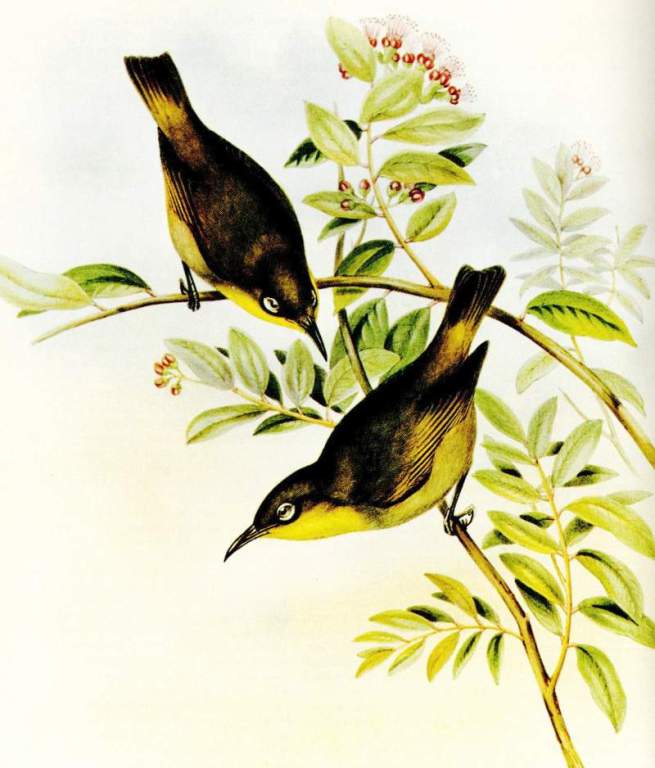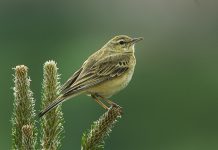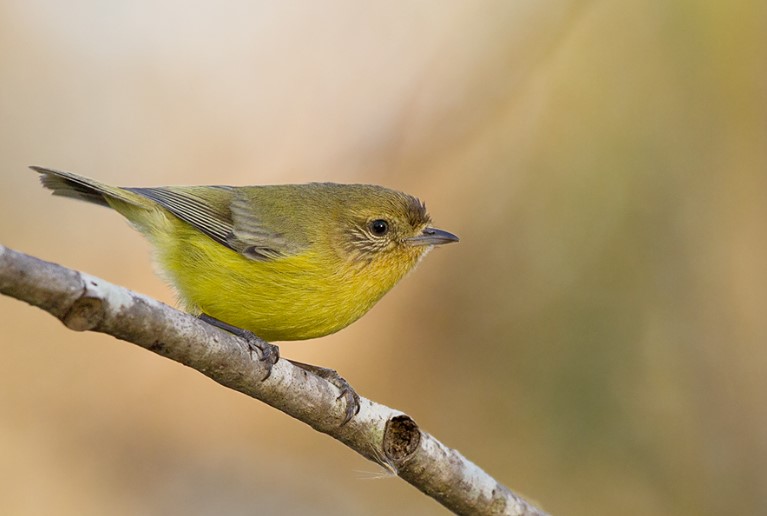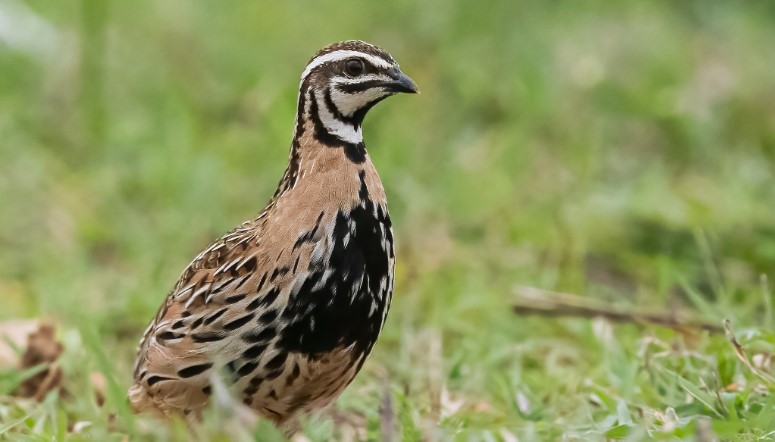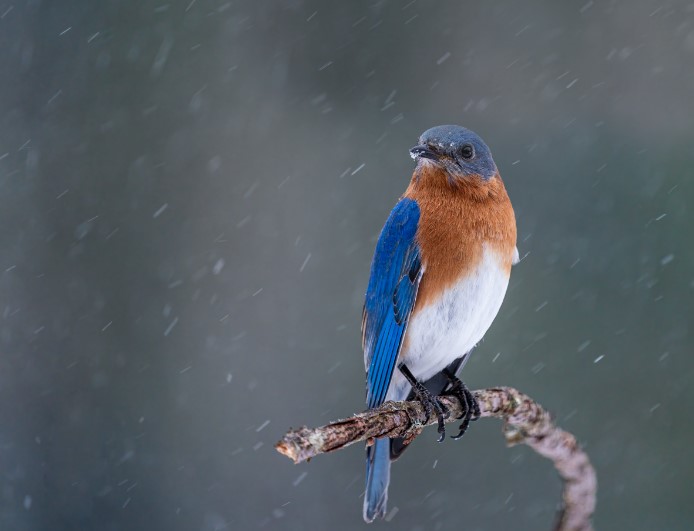Extinction: Lord Howe Island White-eye (Zosterops strenua) was once a common bird, but it was extinct by 1923.
Description: Adult: head and rest of upperparts bright olive green with a band of grey across shoulders and a ring of white around each eye showing a black line beneath; wings and tail slaty brown margined with olive green; chin and throat yellow; flanks pale vinaceous brown; abdomen almost white; under wing coverts and axillaries white; under tail coverts pale yellow; bill and feet bluish black; iris light brown. Sexes alike.
Measurements: Male: wing 71 mm; tail 54 mm; culmen 11 mm; tarsus 22 mm. Female: wing 67 mm; tail 52 mm; culmen 11 mm; tarsus 22 mm.
Habitat: Lord Howe Island White-eye is found in Lowland forests, palm glades, and scrubby vegetation
John Gould, “The Bird Man’, introducing this little bird in his Supplement to the Birds of Australia (1869), wrote: “The present new species is the largest member yet discovered of a group of birds comprising numerous species’. In terms of species, the group is indeed well endowed—there are not very far short of a hundred—and these are all remarkably similar in appearance.
They are 7-13 cm (3-5 in) long; almost all show a distinctive white ring around the eye; and they display a limited, though beautiful, range of colors in the plumage—usually olive green to greyish brown on the upperparts, from yellow to grey or white beneath. Although not particularly strong flyers, they have proved adept exponents in the art of colonization, and in addition to a presence in Africa and Australasia, they have spread through many islands of the Pacific. For the most part, they seem quite vigorous species, and there is even evidence that the process of range expansion continues to the present day. As Gould suggested, the white eye he described was a particularly large one, and on account of this comparatively handsome size, he gave it the vernacular name of ‘Robust Zosterops’. As a description of size, his name might appear justifiable, but, in terms of resilience, time has shown it to be quite inappropriate—it was in fact a very ironic choice. Only a single skin—collected in September 1852 by the British naturalist John MacGillivray, who sailed aboard HMS Herald under command of Captain Denham—was available to Gould when he wrote the Supplement, but the species proved common enough; within 60 years it had gone, presumably exterminated by Black Rats accidentally introduced to Lord Howe Island in 1918 after the grounding of SS Makambo.
Gould’s ‘Robust Zosterops’ was endemic to Lord Howe Island in the Tasman Sea, which it shared, surprisingly, with another white-eyed species (Z. tephropleura). It is curious that tiny Lord Howe, 11 km (7 miles) long by 1.6 km (1 mile) wide, should provide a home for two species of Zosterops when the entire continent of Africa contains only four.
Nest: Lord Howe Island White-eye bred during November and December. A cup-shaped nest, 10 cm (4 in) wide by 5 cm (2 in) deep, was made in the fork of a twig using fine rootlets and grasses as building material and lined with skeleton leaves and other soft things. Two or three blue eggs made up the clutch, each measuring around 18 mm by 13 mm.
Diet: The Lord Howe Island White-eye are fed on fruits, insects, flowers, and other bird’s eggs.
Locally, these Lord Howe Island white-eyes were known as ‘Big Grinnels’, a name distinguishing them from the other white-eyes of Lord Howe. In the days of their abundance, they were regarded as something of a pest; they were destructive to fruit and crops and also were alleged to suck the eggs of other birds. Within just a few years of the rat invasion of 1918, however, all were gone. A search by Michael Sharland in 1928 and another search and inquiry in 1936 revealed no trace of them.
Conservation Status: According to IUCN, this bird has been declared extinct.
Read More: Australian Hobby: A Fierce and Dashing Hunter
